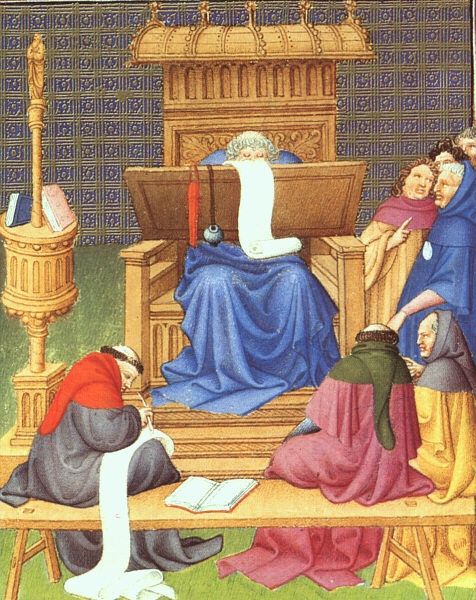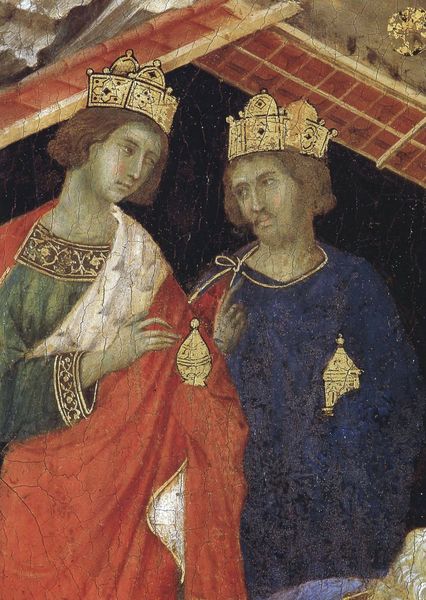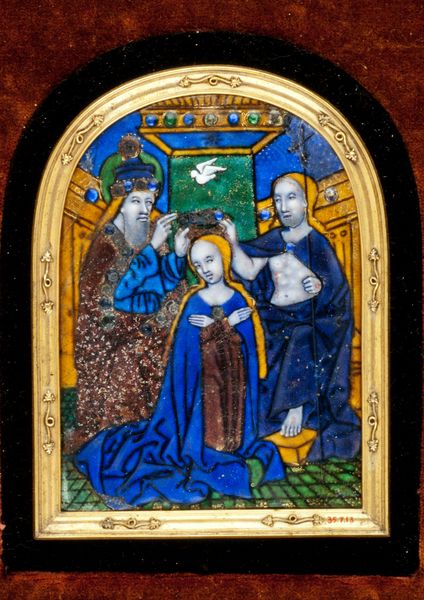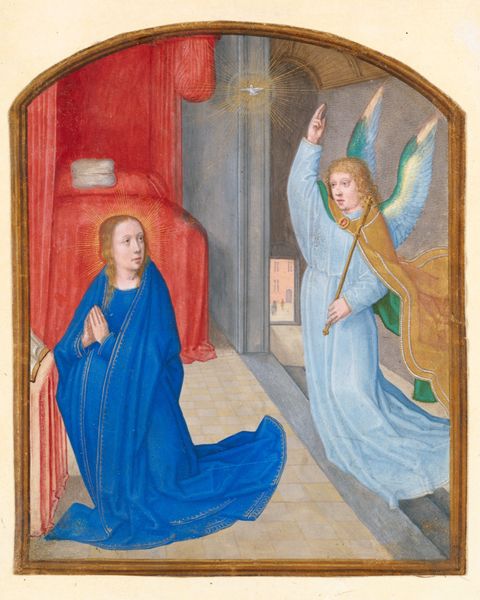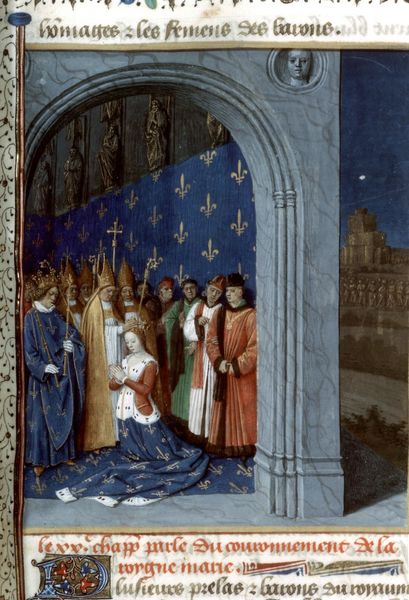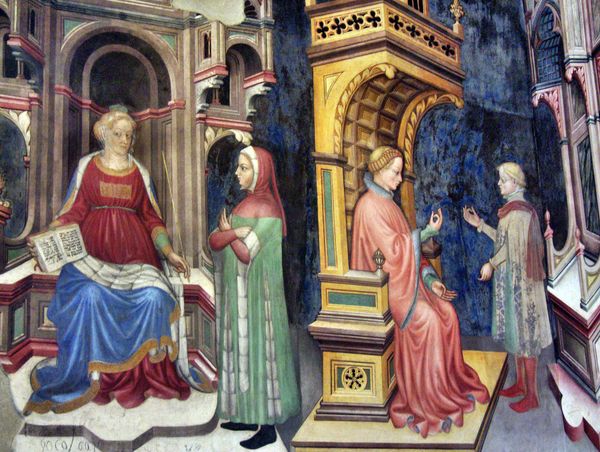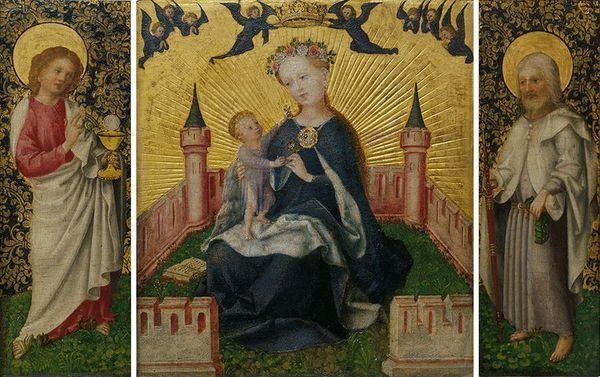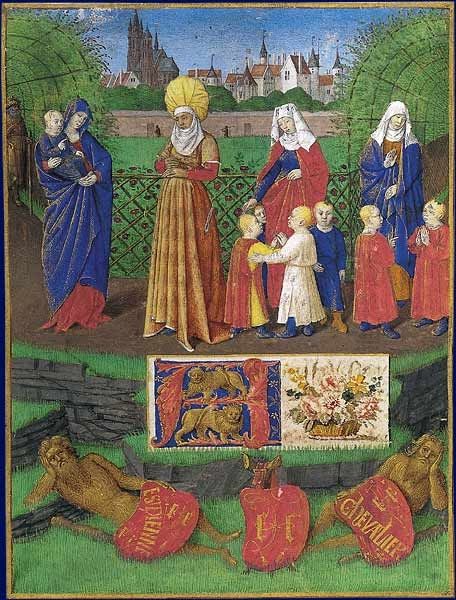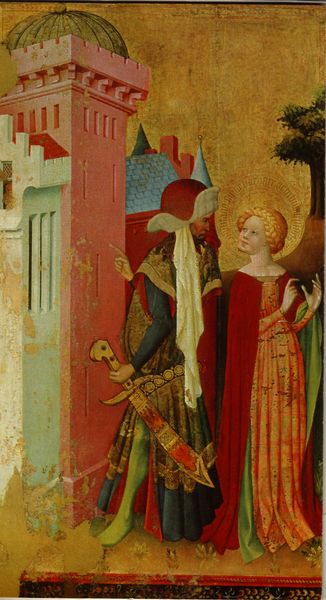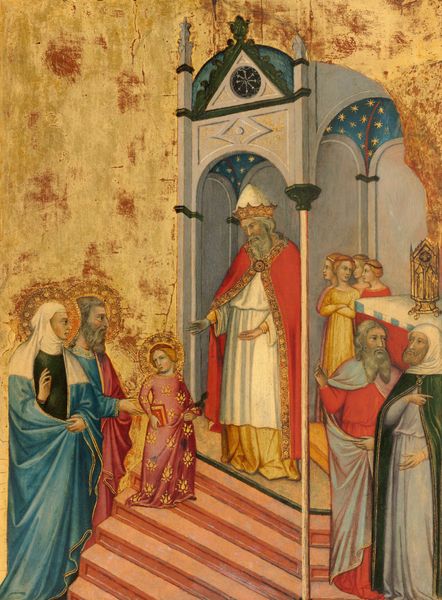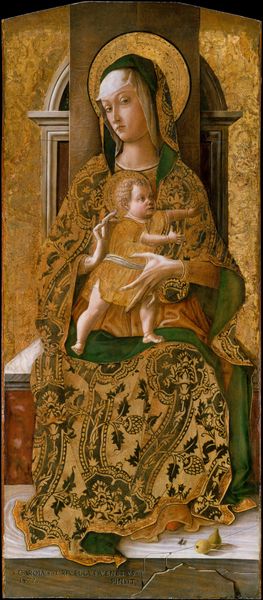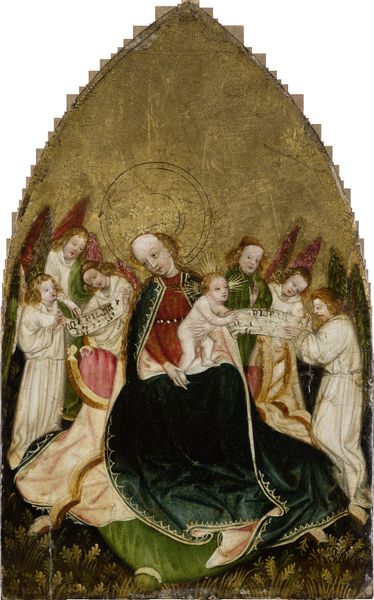
panel, painting, oil-paint, textile
#
portrait
#
medieval
#
panel
#
painting
#
oil-paint
#
textile
#
figuration
#
oil painting
#
intimism
#
history-painting
#
italian-renaissance
#
early-renaissance
#
miniature
Copyright: Public domain
Jean Fouquet created this panel of the Virgin and Child Enthroned in the 15th century, using oil on wood. The smoothness and luminous depth of the painting is a direct result of oil paint, a relatively new medium at the time. Fouquet has employed it here to full effect, creating the jewel-like colors and textures, especially the Virgin’s robe. Look at the deep blue, achieved with precious ultramarine pigment, derived from lapis lazuli stone, ground and suspended in oil. It conveys a sense of opulence and the divine. The smooth surface belies the labor involved in the painting’s creation. The application of oil paint requires a slow, meticulous approach, building up thin layers of color to achieve depth and luminosity. The artist had to be attuned to the drying times and potential chemical reactions of the materials. Considering the cost of materials and the skill required, this panel must have been commissioned for a wealthy patron, demonstrating their social standing. By looking at materials, process, and social context, we gain a deeper understanding of the painting's meaning.
Comments
No comments
Be the first to comment and join the conversation on the ultimate creative platform.

